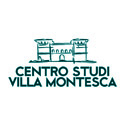The methodology for achieving the objectives is based on three main milestones: A) research phase on the modern use of the Video methodologies for adult education will be realized in the six countries involved in the project. This phase is very useful because it can give an overview of the spreading of this “discipline”, trying to put a sort of order in the fragmented bibliography and experiences in this field. It also can be the starting point for the production of the training materials both for the facilitators/educators/teachers and both for the beneficires. Some indicators will be used to assess the work of this phase and also the products: extent and relevance of the information produced, number of practices analysed, quality of the interviews to the relevant actors, extent to which tasks and outputs listed in the work plan have been completed satisfactorily, expectations and objectives satisfied; relation between qualitative and quantitative data to reach the survey objectives; level of the quality of the report; number and typology of any other direct and indirect impact produced by the studies. B) pilot workshops (one in each country involved in the project) for trainers, facilitators, teachers and adult educators working with disadvantaged people. The workshops will be designed around principles of experiential learning. In each partner country will be implemented a training programme in order to explain the main stages of a participatory video facilitation (how to manage a PV laboratory with disadvantaged adults, training assignments, the use of the camera, the role of facilitators inside the group). During the workshops a wide range of techniques that enhance creativity, sharing, reflection and learning will be presented by experts. These include games and group exercises as well as hands-on facilitation experience, techniques of personal and group development as well as processes and a sensibility to the challenges and issues faced by vulnerable or marginalised people. The workshop will teach also about the use the video camera to develop basic skills (simply handing over cameras is not participatory video, and doing so without structure may cause a failure in reaching the project objectives). Appropriate teaching material will be produced. Main indicators: numbers of beneficiaries involved; customer satisfaction, extent to which tasks and outputs listed in the work plan have been completed satisfactorily, efficacy of the training programme… C) experimentation of the method through EU laboratories with disadvantaged (Italy: unemployed with psychic or social hardship; Lithuania: Rom; UK: people with mental disabilities; Greece: adults with physical disabilities; Spain: long-term unemployed; Germany: migrants) in which opportunities for social/professional instatement are built. The objective of the method is to transfer practical actions into daily life stimulating the subjects’ abilities to socialise and to act autonomously with regard to their future instatement in society and in the world of work. Also practical skills are acquired through the docu-films production, using all kinds of language – words, visual representations, sounds and music etc – first imagining them (subject, staging, storyboard) and then creating them (scenes, acting, gags, music, filming) to finally obtain, after the editing, the sum of the various language expressions recreating a universe coherent and “metaphorically adherent” to the lives of the beneficiaries. An important didactic element is the full involvement of the groups in the production of the docu-film, characterised by collective dynamics in many phases – i.e. the brainstorming session to discuss the script, the search for the right location, the creation of scenes. It is important to hand the camera over to the group at the very beginning of the laboratory to demystify the technology and to avoid making technical presentations about how it functions. Thus, the first session will strat with the ‘name game’, in which the group members form a circle and introduce themselves by making a simple statement to the camera. The first person will be shown how to hold the camera and press ‘record’ to film the person opposite them in the circle. He then will pass on the camera to the next person in the circle and will tell him what he has just learned. Everyone films, everyone is filmed, everyone is a student and everyone is a teacher. Main indicators: numbers of beneficiaries involved; customer satisfaction, extent to which tasks and outputs listed in the work plan have been completed satisfactorily, efficacy of the laboratory output in conformity with the pre-defined goals to be reached, number and typology of stakeholders involved… The project will be also monitored through Project Progress Indicator (PPI): for monitoring the overall progress of the project as well as its goals. (Extent of the information on projects outputs; Extent of the information on experiences in assessing input/output or cost/benefit relationships; risks assessment…) Project Success and Impact Indicator (PSII): for indicating how the performance and the impact of the project will be further improved.
Calendar
May 2025 M T W T F S S « Mar 1 2 3 4 5 6 7 8 9 10 11 12 13 14 15 16 17 18 19 20 21 22 23 24 25 26 27 28 29 30 31 Tags
adulto Africano Brasileño Bruselas Centro de negocios Knowledge dock Cineasta comentarios Compañero EACEA educadores ERA PURGOU experto facilitadores FAN Fernanda Baumhardt Financiación comunitaria formación formadores fotos Fundación Amigos de la Naturaleza Granaforma IUCN KEFIAP Lisa Glahn Londres método PATER plenario Premio Mundial de Educación profesores PROINI Reunión segunda reunión segundo sesión talleres talleres de formación Universidad del Este de Londres Unión Internacional para la Conservación de la Naturaleza Video vídeo participativoCategories
- News (9)
- Reuniones de la Asociación (2)
- Sin categoría (10)
- Sitio Web (1)

